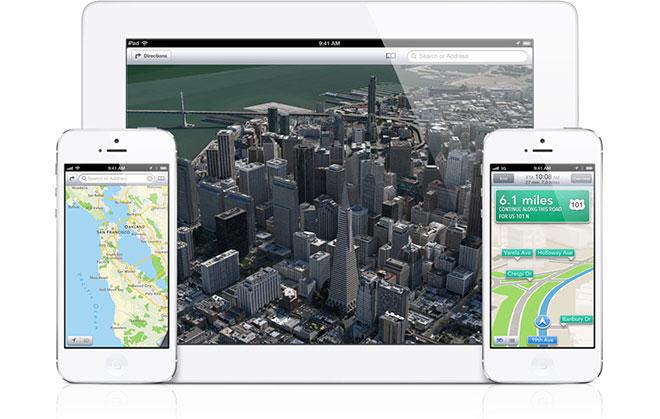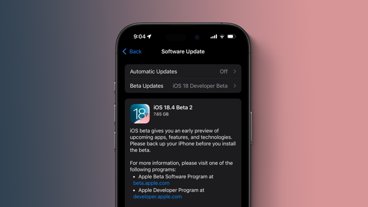Apple on Thursday pushed out to developers a new beta build of its iOS mobile operating system designed to address a bug that can allow users to get past an iPhone lock screen even when a secure passcode is enabled.
iOS 6.1.3 beta 2 is available to members of Apple's development community for testing prior to the software's official release. People familiar with the latest build indicated it addresses the security hole discovered last week that could allow anyone to bypass an iPhone lock screen.
Those with access to the new software indicated it is identified as "Build 10B318."
The software also reportedly includes a number of improvements related to the Maps application in Japan. Specifically, they are:
- Improved pronunciation of roads during turn-by-turn navigation
- Optimized directions to more strongly prefer highways over narrower roads
- Now indicates upcoming toll roads during turn-by-turn navigation
- Added labels for junctions, interchanges, on-ramps, off-ramps, and intersections
- Added indicators for transit station buildings, subway lines, and traffic lights
- Updated freeway color to green
- Updated icons for some location categories including fire stations, hospitals, and post offices Added 3D buildings including Tokyo Station, Japan Imperial Palace, and Tokyo Tower
The new beta comes only two days after Apple released iOS 6.1.2 to the public, addressing a bug related to Exchange calendars that could drain a device's battery.
Apple first began testing its planned improvements for iOS Maps in Japan with the first beta of iOS 6.1.1 earlier this month. But that software number was quickly used for an update issued to iPhone 4S owners that addressed issues related to battery life and 3G connectivity.
Thursday's beta software release was renamed iOS 6.1.3 for developers because the iOS 6.1.2 identifier was also used this week in the latest public update.
 AppleInsider Staff
AppleInsider Staff








 Brian Patterson
Brian Patterson
 Charles Martin
Charles Martin


 Malcolm Owen
Malcolm Owen
 William Gallagher
William Gallagher
 Christine McKee
Christine McKee
 Marko Zivkovic
Marko Zivkovic







18 Comments
They should have just waited a few days and included it with 6.1.2. Kind of dumb to make so many updates. Many people probably don't even know that there was a 6.1.2, and now they have 6.1.3 coming......
This is how Apple is going to battle the jailbreakers: Frequent updates which make it inconvenient to have to keep restoring-update-rejailbreak over and over.
This is how Apple is going to battle the jailbreakers: Frequent updates which make it inconvenient to have to keep restoring-update-rejailbreak over and over.
I rather think they've been doing it via adding features that remove the I HATE MYSELF I HATE MY LIFE WHY CAN I NOT REMEMBER ANYTHING IT'S RIGHT THERE PHRASE TWO WORDS IT'S LIKE THE NEURONS RESPONSIBLE FOR HOLDING IT HAVE DIED I KNOW EXACTLY WHERE IT BELONGS AND ITS DEFINITION BUT value proposition (this is what I go through every day) of jailbreaking in the first place. I can't remember the numbers down through the years offhand, but I would not at all be surprised that the proportion of jailbroken to nonjailbroken users has drastically been reduced from iPhone OS 1.0.2 to iOS 6.1.2. In fact, I think I'm gonna go ahead and say that it's absolutely lower now than it was then.
In saying 1.0.2, I'm counting from when jailbreaking as a concept was first organized. A hacktivation existed a week after launch day for 1.0.
But you do make a point about the rapidity of these updates. I don't think we've seen this many this quickly in a long while, if ever, and the size and scope of them makes me just the tiniest bit worried that they don't have every single one of their ducks in a row over there…
They don't have their ducks in a row, or the ducks are too close to one another? ;)
QA is a tricky process. Time to regress and validate an upgrade for a bug fix, call it A, and the same process for bug fix B with the large matrix of products they have to test against is not just a sum of the two. It also may have been that one had been testing longer than the other and could definitely have much different sizes of tests. I would argue that one has the potential to be much more harmful than the other so it may make more sense to release these separately. The core QA teams could also be very different (or not).
It looks simple on the surface but I would argue that getting each out as quickly as possible is most important and that with the over the air updates available for so many devices now 2 updates is not that big a deal.
I would also argue that if these were updates for something that was merely cosmetic than holding them and consolidating them would be the best and most simple move but that is not the case with these bug fixes.
Just my thoughts -- BTW I worked in Network QA at Apple for a couple years testing and writing tools for the same back around 89-90. We tested previously released hardware with new systems and previous systems with new hardware (hard to remember the day when each new Mac didn't require at least a new patch). The Matrix was huge back then with far simpler combos.